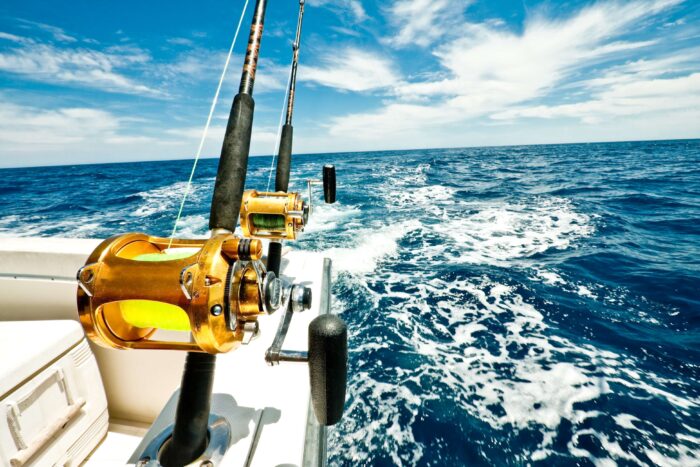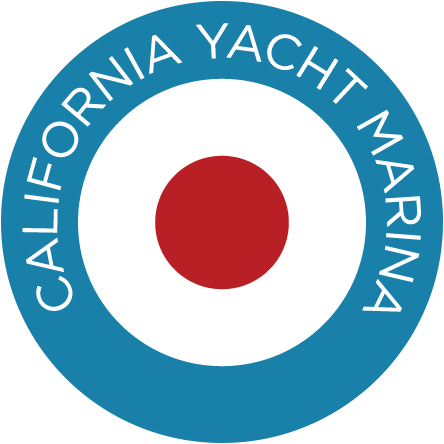California Yacht Marina
What Is a Good Boat for Sport Fishing in SoCal?
As Americans took to the water in the wake of the COVID-19 pandemic, recreational boat sales climbed to an all-time high in 2021. Sales have normalized a bit in 2022 but continue to outpace pre-pandemic levels. Unsurprisingly, activities like sport fishing have grown in popularity as families focus on spending more quality time together. All signs indicate that boating will remain a sought-after recreation as more people discover the mental health benefits, joys, and freedoms of being out on the open water.
If you’ve decided to join the ranks of powerboat or sailboat owners in Southern California, you may not know where to start. Keep in mind that most first-time boat owners don’t buy the end-all, be-all boat at first. While the vessel should meet specific safety parameters, focus on finding something you can afford and enjoy this season with help from a broker. You can always sell the boat and buy another one later on.
The variety of boats to choose from can be daunting, so use this guide to steer you in the right direction. Then, reach out to California Yacht Marina for more information about boat slip rentals. We offer competitively priced yacht and sailboat storage at three ideally located marinas across the SoCal region.

What Is the Right Size Boat for Offshore Fishing?
Somewhere between a kayak and a million-dollar offshore sport fisher is the perfect boat for you. Many first-time buyers lean toward smaller boats to enjoy the excitement of offshore fishing within a smaller budget. Besides affordability, downsized vessels also offer these benefits:
- Ease of towing, handling, and docking in tight quarters
- More affordable insurance and boat storage costs
- Less maintenance
- Better fuel economy
In general, the minimum boat size for nearshore and offshore fishing is in the 17- to 22-foot range. This includes basic runabouts and Jon boats. Larger vessels closer to 20 or 40 feet long include center consoles, walkarounds, cuddy cabins, and Xpress boats. The ultimate fishing boat is a sport fisher designed to catch big game trophies in deep water.
Finding the Right Boat: Construction, Quality & Design
Plenty of small boats are suitable for fishing bays, channels, and flats, but you’ll need to look deeper into the boat’s construction, quality, and design if you plan to run offshore.
- Hull design: Not all small hulls are equally capable of handling the specialized demands of offshore fishing. Many experts recommend a 17- to 20-degree modified V rather than a deep V of up to 26 degrees for some damping effect with more lateral stability.
- Fuel capacity: Small boats tend to have small gas tanks, but light models with small outboards consume surprisingly little fuel. Learn the range of your boat and plan for at least a 10 percent reserve.
- Flotation: The best hulls are filled with foam to ensure positive flotation in an emergency.
- Scuppers: Don’t go offshore in anything but a self-bailing boat. That said, the scuppers should be large enough to drain water as fast as it comes on deck in rough seas.
- Transom height and design: The transom also plays a key role in keeping water out of small boats. To avoid too much water running to one side or the other, consider a sport fishing boat with a full transom. A cut-out transom may also be suitable if the boat has a generous motorwell.
- Engine: A twin or triple outboard engine setup is the traditional preference among offshore anglers, but this can be weight-prohibitive in some cases. Thankfully, today’s improved engine reliability means a single outboard coupled with a small auxiliary engine should suffice.
Safety Equipment for Your Offshore Fishing Boat
No small boat belongs offshore without the proper safety equipment. Here’s what to take with you when you fish offshore:
- Fixed-mount radio: Cell phones offer some degree of offshore communication, but they’re no substitute for very high frequency (VHF) marine radios. Fixed-mount radios have a 15- to 20-mile range, much further than their handheld counterparts, and automatically summon on-water help when you place a call.
- GPS plotter/sounder: Equally critical for navigation and fishing, a combination GPS plotter/sounder maximizes space on small consoles.
- Compass: Be sure to have a compass on hand in case your GPS fails.
- Extra battery: A dual-battery system ensures you always have one in reserve if the first battery dies.
- Emergency beacons: Purchase, register, and use a deck-mounted Emergency Position Indicator Radio Beacon (EPIRB) or handheld Personal Locator Beacon (PLB) to help search and rescue authorities find you in an emergency.
- Lifejackets: It wouldn’t just be illegal to fish offshore without a lifejacket—it would be insane.
- Emergency kit: Include a flare gun and flares, light sticks, waterproof strobe lights, flashlight and extra batteries, and sunscreen.
- Food and water: Pack at least one-half gallon of water per person and some nonperishable food in case you get stranded for a day or two.
- Anchor and line: You may find an anchor useful for keeping the bow into the waves when the sea gets rough. Plenty of heavy line is also a must if you have to be towed.
Boat Slip Rentals at California Yacht Marina
Once you have found the perfect boat, the final step is to secure the proper storage location. Renting a boat slip is ideal because your vessel stays on or near the water, preventing you from towing it back and forth. Depending on how often you go sport fishing, this could be a huge time-saver. California Yacht Marina operates three separate marinas—Cabrillo, Wilmington, and Port Royal—each of which features onsite amenities and exceptional customer service to give boaters peace of mind when not using their vessels. For more information about our boat slip rentals, please call 424-201-0467, send us an email, or fill out our online contact form. You can also call ahead to schedule a tour of our facilities to ensure we’re the right fit for your needs.
